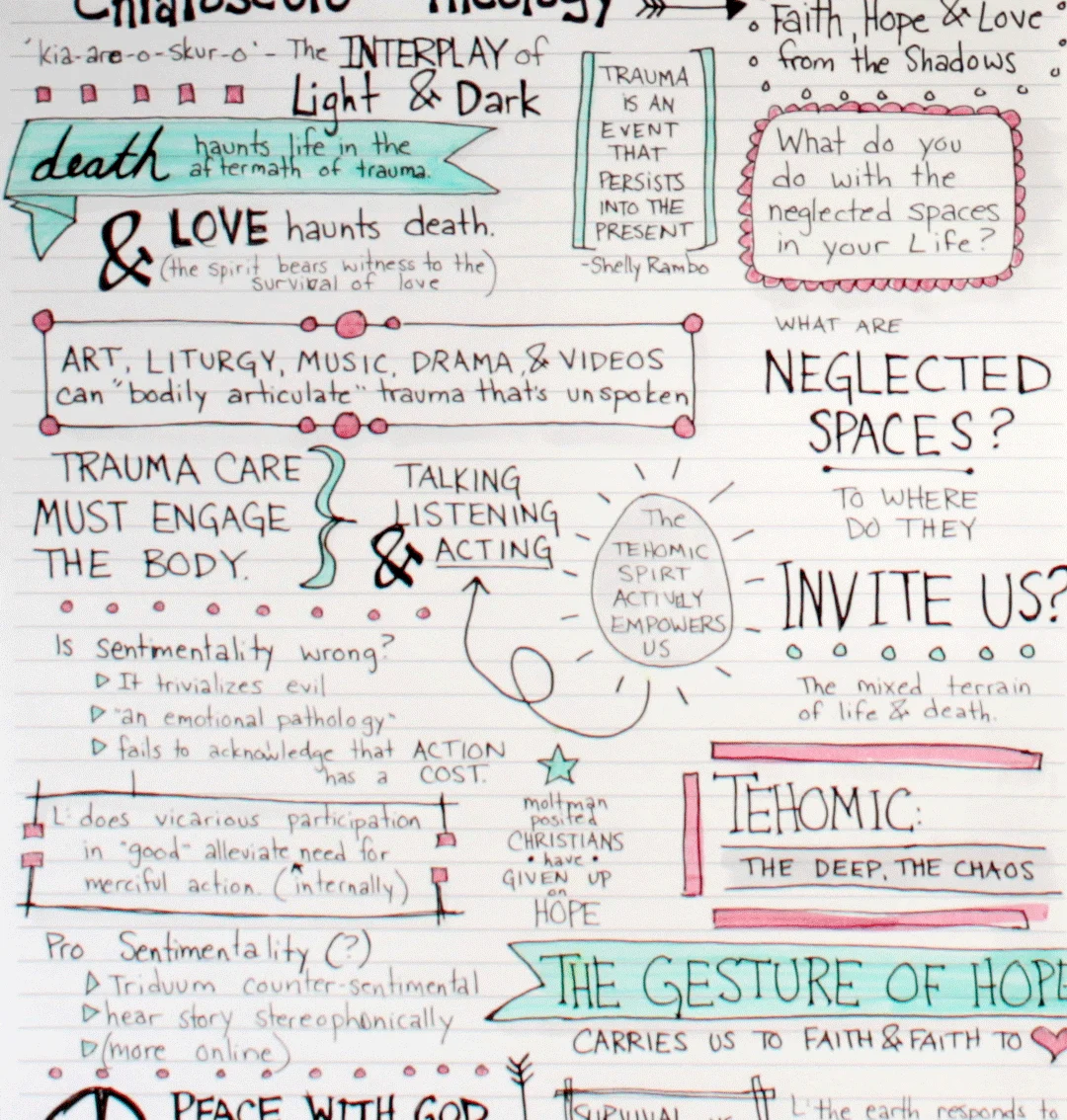Whether high school, college, grad, or post-grad studies, creating handwritten doodle-note style course notes during a lecture can help you remember the content of a lecture better, study more effectively, and ace your next big midterm or final.
Learning to take cute Notes

Classroom lectures are an ideal time to practice lettering and doodling. Research indicates doodlers actually retain more content than typically hand-written note-takers (and WAY more than note-takers using a laptop to take notes). Thankfully, when I went to grad school I was lucky to learn under instructors who knew this type of brain science (and often were actually teaching it), but even in more rigid learning environments, few instructors can take offense at a classroom doodler transforming their lecture into art.
But what if it’s not “good enough” for your cute notes to be called art? Practice.
Time dedicated to a task (in this case, spent in a classroom), plus willingness to practice, and the freedom to fail will always, always result in improvement.
As an example of this, I love showing off my notes from my first term of graduate school and comparing them to notes I took towards the end of my time back in the classroom:




Learning to cute note and bullet journal well takes time, effort, and willingness to fail
I think the willingness to fail is key. It’s true for learning to improve your art, but also true for the value of doodling apart from artistic growth.
This belief is supported by recent research that found that the effectiveness of art therapy is only very minimally correlated with a person’s artistic skill- Meaning, people who don’t particularly enjoy art or think of themselves as artists still benefit from art therapy) I’m convinced a similar principle is at play in visual notetaking: whether your doodles are professional, child-like, or some uniquely personal place in between, they are a creative process keeping you engaged with the classroom material during class lectures. If you continue to use classroom time to practice, you will improve.
Making Effective Study Sheets with Bullet Journal Style Doodles
Next, I wanted to talk a bit about how to use doodles and bullet-journal style note taking to improve your memory when studying for a big test. As any student knows, when you are cramming for a big exam, it can be difficult to keep track of all the information.
Using a visual note taking method to create a visual study sheet can help your brain use the memory of the page’s color, images, and structure to link back to the data you need to recall for your test.
My technique for creating a visual study sheet includes a few steps:
- 📝 Review class notes to review what already know and gauge what information you aren’t confident you’ll be able to recall on the test.
- 📝 As you review notes, I create a second set of notes that include only the points of information that you don’t know, so you can exclusively study the information you need to cover most.
- 📝 As you make the new set of notes, think about how the data is structured (i.e. a concept with sub-categories, vs an “if/then” statement, etc) and visually structure your notes in a way that visually tells you something about the concept you are studying.
- 📝 Choose 1-3 colors (I love using Copic markers for this) and color your doodled notes. Both color and structure of information will help you memorize the information for your test.
- 📝 Next, use this one-page study sheet to study until your test.
- One way to interactively study the information is to take a new sheet of paper and draw the structure or shapes in your visual study sheet, then try to fill it in without looking at the study sheet. Immediately, you’ll begin to see how blocking visual shapes helps your brain fill in the content.
- 📝 On test day: as soon as you receive your test booklet or answer sheet, flip the page over and redraw your study sheet on the back from memory, duplicating your study sheet from memory on your test so you can reference it. (Depending on how you studied, you may not need to redraw the whole sheet, but be sure and “brain dump” all the information you think you may forget once you are settled into the testing process) If you need to, you may even be able to use the same color markers to re-create your resource (although this may be worth running past your teacher or test proctor first).
Notice how I used different shapes, colors, and structures around the page to illustrate different concepts. When it comes time to recall on a test, remembering the color or structure of a part of the page can help your brain link it to the information there.

For specific strategies for taking cute notes, check out my guide to creating pretty class notes.
